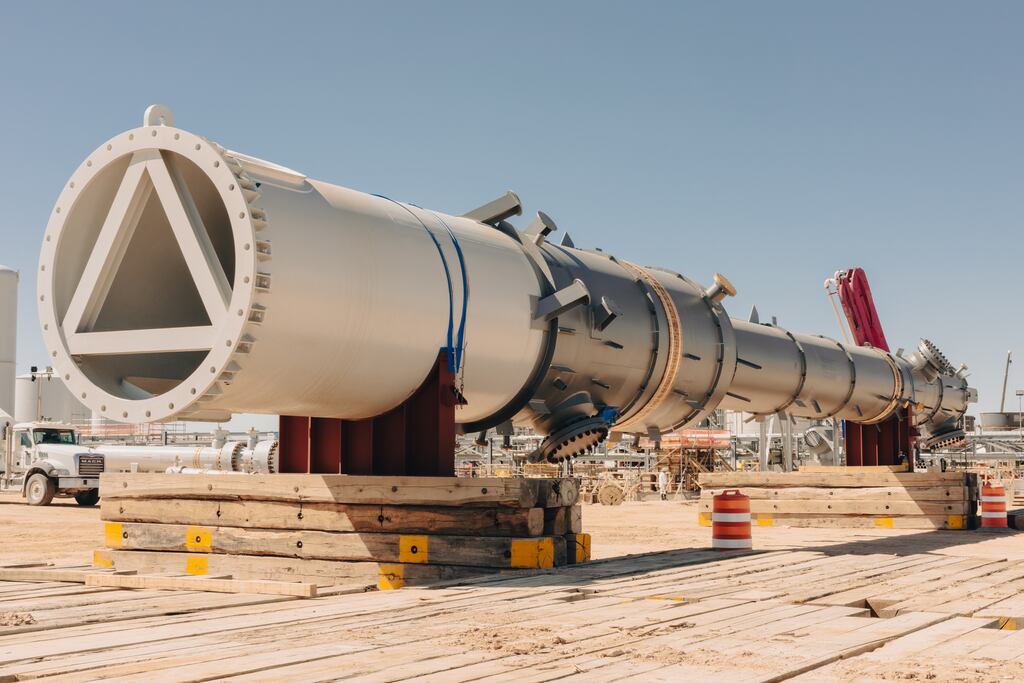In May, the World Meteorological Organisation (WMO) published a report projecting that global temperatures are expected to continue at or near-record levels over the next five years. As global heating accelerates, there is even a small chance (1 per cent, the WMO said) that the temperature rise could exceed 2 degrees in this period.
For decades, scientists have been warning about the devastating consequences that even a 1.5-degree increase in global temperatures would bring. You would think that no effort would be spared in implementing workable, scalable solutions and in eliminating fossil energy as quickly as possible.
However, international agencies and EU governments are still heavily relying on costly and speculative negative emissions technologies (NETs) to make their climate strategies add up.
These technologies are controversial because they often prolong our dependence on fossil energy, cannot be deployed at scale quickly or are hugely expensive compared to energy efficiency and renewables. They include carbon capture utilisation and storage (CCUS), direct air capture (DAC) and bioenergy carbon capture and storage (BECCS).
RM Block
CCUS was hyped up after the adoption of the Paris Agreement, but has consistently underperformed since then. The International Energy Agency’s 2024 analysis said CCUS roll-out remained nowhere near what was needed to deliver under the Agency’s Net Zero Scenario. CCUS would need to capture and store around one gigatonne of carbon dioxide (CO2) a year by 2030, but current projections estimate the removal of only 430 megatonnes of CO2 by then.
To meet the 2050 target, CCUS would have to scale up a hundred-fold. The EU’s 2040 target of 90 per cent emission reductions relies heavily on NETs for “hard-to-abate” sectors such as aviation and industry, projecting that 400 megatonnes of CO2 will be removed permanently.
The small number of working DAC projects globally – including an innovative Irish project in Co Waterford called Neg8 Carbon – remove carbon at a steep cost of anywhere between €200 and €1,000 a tonne of CO2 removed. Their potential is largely determined by the price of carbon credits on voluntary carbon markets.
The current pipeline of projects will at best remove around three megatonnes of CO2 globally by 2030, which is a drop in the ocean when you consider that global carbon-dioxide emissions last year were about 38 billion tonnes. Enhanced weathering is another carbon removal technology that works, but can at best deliver 30 megatonnes of CO2 a year by 2030.
Most of these industrial-sector NETs come with high energy demands, high capital and operational costs and the need for significant CO2 storage infrastructure. As things stand, these technologies are not delivering carbon reductions that are needed. Global emissions of greenhouse gases are still dominated by fossil fuel combustion; until coal, oil and gas are replaced by renewable energy sources we do not stand a chance of averting climate disaster. That is simply physics, not an opinion.
Given the timescales available for meaningful action – the Intergovernmental Panel on Climate Change (IPCC) states that global CO2 emissions need to be halved by 2030 – the reliance on unproven technological solutions to meet near-term targets is ethically and politically disastrous.
We should not stop researching them, but policymakers should be acutely conscious of their limitations for staying within the increasingly constrained global and national carbon budgets.
We need a technological strategy that is humble and agile. The road to climate neutrality is paved with great ideas that failed to reach the market in time to make a difference or had unintended negative consequences such as job displacement or “sacrifice zones” to extract critical raw materials.
Moving from the laboratory to market requires massive capital investment and a stable, science-based policy framework underpinning research and investment. It also requires public acceptance or what is termed a “social licence”.
Part of the policy challenge is that we take the convenience and availability of fossil energy and chemical fertilisers for granted. To decarbonise the energy system, we will need to redesign it and adapt our use of energy to its availability. For householders, that might mean only using the washing machine when the sun is shining on PV panels or a smart grid and smart tariffs that determine the optimal time to do so.
For a manufacturing plant, it means generating and even selling its own power or deploying entirely new production systems, for example, electric arc furnaces. This will require behavioural shifts, organisational modifications and energy market redesigns that are much more complex than the actual technologies involved.
Even “cost-effective” solutions require an implementation pathway, and many proven measures face barriers to market entry, often due to the dominance of fossil incumbents or the lack of grid infrastructure and storage.
As long as national policies are pulling in different directions, we won’t have the net zero-aligned financial and regulatory framework that new technologies require to make a real impact.
But the truth is that many emerging technologies simply can’t compete with the growing affordability of solar PV, wind and battery technologies. So what are we waiting for, except the displeasure of the fossil fuel industry?
Sadhbh O’Neill is a climate and environmental researcher



















